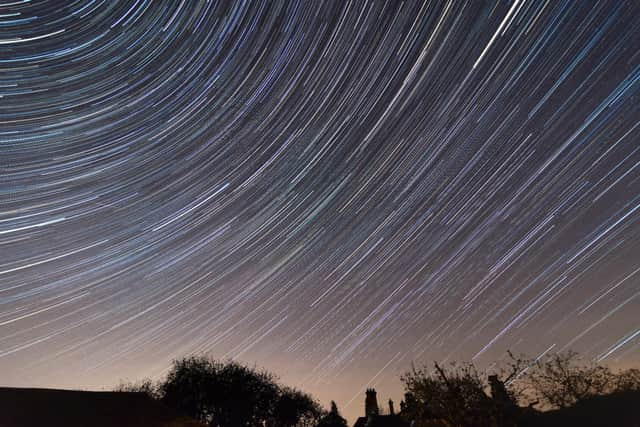Perseid meteor shower 2021: when does shooting star display peak - and where and how to see the Perseids in UK
and live on Freeview channel 276
Stargazers are in for a treat as the Perseid meteor shower has arrived in the UK again.
The dramatic meteor shower, which occurs every August, is set to peak this evening (Thursday 12 August).
Advertisement
Hide AdAdvertisement
Hide AdIt’s thought of as one of the most spectacular astronomical events of the year, since the Perseids are among the brightest meteor showers, producing up to 50 shooting stars an hour.


Here’s everything you need to know about the phenomenon.
What is the Perseid meteor shower?
The yearly phenomenon happens each year when the Earth moves through the dust stream left by the tail of the Swift-Tuttle comet.
As the Earth collides with the debris, they burn up and appear as bright streaks of light crossing the sky, creating the well-known image of a shooting star.
The Perseids get their name from the constellation Perseus, from which the shooting stars appear to emerge from. This is known as the “radiant”.
Advertisement
Hide AdAdvertisement
Hide AdIt’s one of the most active meteor showers on the astronomical calendar, producing an average of between 50 and 100 shooting stars an hour at its peak.
The shower in 2017 was especially active, delivering up to 150 meteors an hour.
When does the Perseid meteor shower hit its peak?
The annual meteor shower arrives every year around the second week of August, but it is potentially visible between 16 July and 13 August.
However, there are peak moments to see the shower during that time frame.
Advertisement
Hide AdAdvertisement
Hide AdThis year, the peak of the phenomenon occurs on the nights of 12 and 13 August.
The strict peak will happen before dawn on Friday (13 August) morning, with that night being the best time to experience the shower for yourself.
But if you miss the maximum peak, you may still be able to catch a glimpse of the meteors for some days after, although they may be harder to see.
How can I watch the Perseids in the UK?
Advertisement
Hide AdAdvertisement
Hide AdThere’s no particular time that’s best for some meteor spotting - it all depends on how dark the night sky is - but you may have to stay up late or set your alarm for an early start if you want to see them in all their glory.
The good news is that you don’t need any special equipment to view the Perseids, as meteor showers are typically visible with the naked eye.
The best conditions to see the Perseids is when the sky is as dark and as clear as possible, meaning the shower will appear brighter. Those living in rural areas with minimal light pollution will therefore have a clearer view.
For most people in the UK, the best time period to see the meteor shower will be between midnight and 5am.
Advertisement
Hide AdAdvertisement
Hide AdBetween those times, the sky should be dark enough and the meteor shower should be as high up in the sky as possible.
You should head out to a dark spot and allow about 20 minutes for your eyes to become accustomed to the dark.
In the UK, the Perseids are always above the horizon. Look out for the shooting stars appearing in clusters, followed by a lull.
However, it’s still worth checking for them at other points from when the Sun sets, as there is still a chance you may see something.
Comment Guidelines
National World encourages reader discussion on our stories. User feedback, insights and back-and-forth exchanges add a rich layer of context to reporting. Please review our Community Guidelines before commenting.
